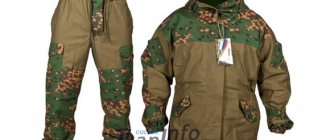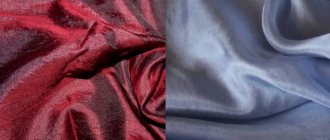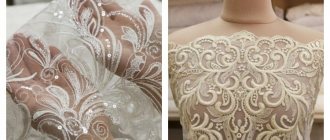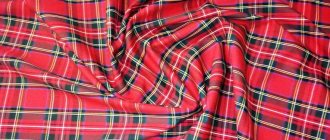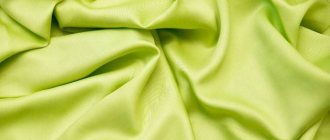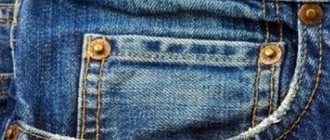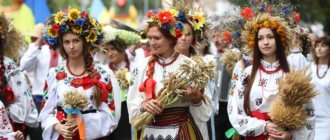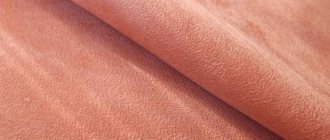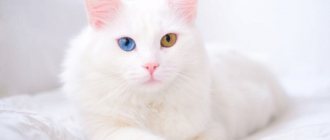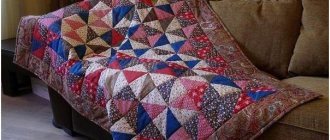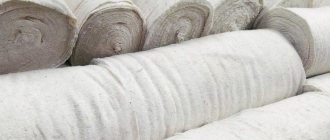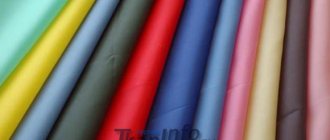Speaking about Russian modern camouflage, for a long time within the framework of this definition we mean not only those samples that are in production or are being supplied to various law enforcement agencies and bodies of the Russian Federation. Camouflage now includes military clothing, which is actively used by both military personnel and employees of other law enforcement agencies. It should be noted that technically among these camouflages there are those that were created back in the USSR. And in this article they are also classified as Russian for easier perception of the chronology. So, let's see how the shape and color of the workwear, developed primarily for the needs of the Russian army, changed.
"KZS"/"Coloring-57"
Historically, the first modern camouflage can be called a color scheme that has several names, the most common of which is “KZS”. It should be noted that KZS stands for “protective mesh suit”, and is not the name of the color, but the name of the product painted in this color. It is believed that the official name of the camouflage is “1957 pattern”, but this name is used quite rarely.
Sometimes this coloring is unofficially called “Berezka”, but such a name cannot serve as a unique name, since “Berezka” is also unofficially called another camouflage - VSR-93. Also, this coloring is sometimes called “border camouflage”, because for a long time it was supplied exclusively to the Border Troops of the KGB of the USSR.
Basics of Camouflage Pattern Construction
Camouflage color is used to make the object on which it is applied invisible. To achieve this goal, coloring has two purposes:
- deforming - violation of the integrity of the perception of the visible;
- imitation - ensures the inseparability of the object from the general background.
The deforming purpose is carried out in modern costumes mainly by fragmenting the object’s figure into several contrasting colored parts. And the imitation is realized through the use of a color scheme similar to that characteristic of the place where the costume will be used, through the simulation of natural objects (trees, bushes, water, mountains, etc.).
Russian camouflage
"Butane"
This camouflage was developed in the USSR in the 1980s as the main pattern for field uniforms. Despite the production of a significant number of products from it, it was not particularly widespread among the troops, although it was quite effective. Currently found in the Russian Aerospace Forces and the Armed Forces of Ukraine (in Ukraine for a long time it was the main camouflage), but in both cases it is being actively removed from supply, being replaced by other models.
Other names for this camouflage are “Oak” and “Ameba”. The colors themselves can vary, only the scheme remains unchanged: a light green background, dark green spots and light brown amoeba-shaped intersecting ribbons.
In the 1990s, in many parts of the RF Armed Forces there was a situation where officers wore “Butan”, and privates and non-commissioned officers wore VSR-93, so in the 1990s this camouflage was sometimes called “officer.”
Britannia
Britain is the founder of industrial army camouflage. The prototypes of many camouflage patterns were developed in Britain. The blue uniform of sailors, khaki , olive , brush stroke camouflage for desert areas - all these are inventions of the British.
Disruptive Pattern Material (explosion, splash of texture) is one of the main camouflages based on strokes of various directions. This type differs from the classic brush stroke camouflage with a “wide brush” by being more chaotic and uneven in the width of the stroke.
"VRS-93"
Developed in the early 1990s, accepted for supply in 1993. It replaced the ubiquitous khaki Afghan. When creating this camouflage, the experience of WWII camouflages, in particular, a number of German camouflages, was taken into account.
According to reviews of those wearing a uniform of this color, it is very good to lie in it, since the longitudinal spots very effectively imitate grass vegetation. However, camouflage is too highly specialized and is not universal and applicable to any terrain. In 1998, products of this color were removed from supply.
Description
The fabric borrowed this property from nature - many species of animals, birds and fish have a protective color, with the help of which they become less vulnerable to enemies or less noticeable to a potential victim. Also, almost all animals have color and surface structure (and sometimes body shape) that are in harmony with their environment.
Translated from French, camouflage means “camouflage.”
The use of camouflage began in ancient times. Thus, for hunting, American Indians made clothes from animal skins or attached leaves and grass to their bodies.
Camouflage fabrics began to be used as military equipment relatively recently - at the end of the 19th century. British colonial troops in India began wearing khaki (meaning “dusty” in Hindi). This is a color of earthy brown, yellow-green “dusty” shades. Since then, this color has been used in military uniforms in almost all countries of the world as a type of camouflage.
VSR-98 "Flora"
Accepted for supply to the RF Armed Forces as the main one in 1998, it replaced the VSR-93. When developing this camouflage, the results of a study of the dynamic efficiency of camouflage were taken into account, that is, the ability of camouflage not to lose its functions when an object moves. According to the study, horizontal stripes help maintain camouflage functions when an object moves, while vertical stripes, on the contrary, unmask when moving.
Unlike previous camouflages, VSR-98 has not only a digital code, but also an official name - “Flora”. However, unofficially, like the VSR-93, it was called “Watermelon” or “Horizontal Watermelon” in the army.
"Flora" was withdrawn from supply in 2009 (according to other sources, in 2011), giving way to a more modern color scheme.
Modern pixel camouflage
In mid-1984, the Russian Federation began to use camouflage called pixel camouflage. These colors are very similar to the pixels of monitor screens. They make it difficult to focus on objects, forcing you to perceive them as noise in front of your eyes. Pixels also make it difficult to determine the speed of an object's movement.
Pixel cloth
Important! Previously, countries had different approaches to military uniforms, but now everyone has a tendency to have universal colors. It is modified only depending on the type of terrain where it will be used.
Thus, the camouflage uniform changes quite often. The armed forces keep up with the times and always improve existing models. Also, in addition to employees, camouflage can be used by fishermen or hunters. There are special children's costumes for the child to wear outdoors or during active recreation. They can be easily ordered in the online store. Which color to choose is described above.
EMR/ZDU/Ruspat/Russian figure/Russian pixel
This camouflage appeared in 2008 (accepted for supply a year later), after a fundamental decision was made to change the “Flora”. Initially, it was assumed that since “Flora” roughly corresponds to the American “Woodland”, which the US Armed Forces are actively changing to “digital” camouflages, then the Russian Armed Forces should keep up with this process.
The creation of “EMP” (which stands for “Unified Camouflage Pattern”) was actively influenced by the German “Flecktarn” camouflage. Its developers managed to “combine the incompatible”: small spots that perform an imitation function are combined in this color scheme so that they form groups of large spots that perform a deforming function. The developers of EMP followed the same path, taking into account the results of studies that showed the effectiveness of extremely small (“pixel”) spots as constituent elements of a texture pattern. The result was "EMP".
Currently, “EMR” is the main camouflage used by the Russian Armed Forces. Interestingly, it is also supplied to the Belarusian Armed Forces, but it is believed that the Belarusian version of the “EMR” has a slightly different color scheme.
Basic US camouflages
Woodland . The most common camouflage USA . Developed in the mid-80s. Available in 4 basic versions. Currently in army units it is replaced by MARPAT.
|
| 3-color desert. Desert three-color camouflage. The Airborne Forces were actively used in Afghanistan and Iraq. Was replaced by a more successful MARPAT |
| 6-color desert, Chocolate Chip, chocolate bar. Wave-like soft pattern in brown tones with imitation of small stones. Currently not used in the US , but “friendly” US units are actively supplied with this camouflage. |
| Digital woodland . Digital forest . The main camouflage of the US Army at the moment. A very good option for camouflage painting. No worse than “birch” - the best camouflage of the USSR. There are three main variants of MARPAT - forest, desert and urban. The color mixing algorithm is preserved, the color balance and the ratio of the number of spots of the base color change. |
| Digital desert . Digital desert . A variation of MARPAT in which the olive base is replaced with basic khaki. A variant of “digital” camouflage for the desert. |
| AT-digital . Three-color camouflage based on MARPAT. The colors used are khaki , olive and brown . |
| Multicam . Modified Woodland (a discontinued type of camouflage) used by commercial firms and security agencies. Good camouflage , but the developers overcomplicated the pattern, which led to a decrease in camouflage properties. |
"Undergrowth"
Created in the early 1990s at the St. Petersburg NPO Spetsmaterialy as an alternative to the VSR-93 for adoption by the Ministry of Internal Affairs. When creating it, the same principles were followed as in “VSR-93”, however, the vertical stripes were made more angular, the brown color was replaced with black, and the base was made lighter than in “VSR-93”. When creating “Undergrowth,” it was taken into account that vertical stripes visually increase the height of a person in such camouflage, which is relevant for the Ministry of Internal Affairs, since an employee in such a uniform has an additional psychological impact on detainees.
Officially it was supplied to the Ministry of Internal Affairs and was actively used by various units of the Special Forces.
How did the protective color of the fabric come about?
The creator of clothing made from swamp-colored fabric is considered to be the Indian tailor Khaki, after whom the camouflage colors were named. He was the first to sew uniforms for English soldiers from material the color of swamp mud.
According to historical documents, the khaki uniform was custom-made by the English Major Hudson, who was fond of drawing before the army. In 1848 he commanded a battalion of scouts in India. At that time, soldiers wore red uniforms. Naturally, uniforms of this color were an excellent target for bandits and enemies. Even from a great distance it was easy to see the soldiers in red uniforms.
A major with creative abilities solved this problem with a non-standard solution - he dressed the soldiers in nondescript costumes, completely invisible against the background of nature. Since the tailor who made this uniform was named Khaki, they decided to name it after him.
Such changes in the battalion benefited Major Hudson, and he quickly rose to the rank of general.
But, unfortunately, the authorities did not support the idea of dressing up the army, and Hudson was dismissed for violating traditions.
"Raster undergrowth"/"Raster"
It was created at the same NPO "Special Materials". It represents the first “dual-frequency” camouflage pattern in the practice of creating camouflage colors. The fact is that the original “Undergrowth” had a good imitation, but rather weak deforming effect, and therefore, when creating its improved version (“Rastra”), a twisted brown mesh network was applied in a special way to the original “Undergrowth” - it turned out to be a “double camouflage" or "camouflage on camouflage".
As a result, the original drawing of the “Undergrowth” is perceived by the eye as if at one frequency, and the superimposed “raster” network – at another, which contributes to the impossibility of intuitive perception of a person in such camouflage as an integral object. There is even a common rumor that if you just walk down the street in “Rastra”, you will not attract anyone’s attention - the eyes of passers-by will simply slide past.
Variety of fabrics for the production of summer camouflage suits
The following types of fabric are often used for summer camouflage clothing:
Oxford
Classic synthetic fabric, which consists of nylon and polyester. It has a square weave when the threads are woven together in the shape of squares. The main advantages of the fabric are durability, strength and water resistance, as well as resistance to chemical compounds. The material retains heat well and does not allow cold air to pass through.
Protective fabric
For your information! The fabric depends on the thickness of the threads and is divided into types from 210D to 600D. It is used to make clothes, shoes and military backpacks.
When washing, it is advisable to monitor the water, the temperature of which should not be higher than 50°C. It is better to choose cleaning products special for synthetic fabrics. When washing in a machine, you should set it to delicate; it is better to avoid spinning. You can dry things by hanging them on hangers. Then they don't need ironing.
Oxford material
Rip stop
The fabric contains polyester reinforced thread and cotton particles. Lattice-type weaving makes the fabric resistant to mechanical defects, that is, it will not unravel at the edges. This fabric hardly wrinkles, and also does not shrink with each wash. Wear-resistant and durable. It is advisable to wash at a temperature of about 40°C in hand wash mode. Can also be dried on hangers, no ironing required.
Greta fabric
The composition includes polyester and cotton. Due to the special type of weaving, the cotton thread is located on the inside of the material, and the synthetic thread is located on the outside. Greta has high wear resistance, retains heat well, and absorbs moisture well. It is advisable to wash at a temperature not exceeding 60°C. If this number is higher, the item will instantly lose its properties. The ideal mode is hand washing. Spin should not be higher than 600 rpm. Drying should be in a vertical position, and ironed only from the inside out.
Greta fabric
Fleece
To create this camouflage fabric, polar fleece fiber is used, which is 100% polyester. The fabric is created in such a way that there are air chambers in its structure. This fabric is hypoallergenic, lasts a long time, is pleasant to the touch, and does not shrink when washed. Wash only in synthetic mode, spin up to 600 rpm. Dry vertically. The material does not wrinkle, so there is no need to iron it.
You might be interested in Features of silk-screen printing on T-shirts and other fabrics
Shirt fabric
This is a mixed type of fabric made from polyester and viscose. It washes well, is soft to the touch and does not cause skin allergies. Caps and bandanas are also made from this fabric. Can be washed in warm water no higher than 70°C. Preferably in synthetic or cotton mode. When spinning, set it to no more than 1000 rpm. Ironing must be done in the same modes as washing.
Mixed material
Membrane
Membrane fabric does not hinder movement and protects well from rain, drafts and frost. Moisture from the body will escape, making the first layer of fabric dry. Wash carefully at a temperature not exceeding 40°C. It is better to rinse two or three times and avoid spinning. You need to dry it in a horizontal position, away from heating appliances.
Tarpaulin
A fairly dense and coarse material, which is created from thick yarn. The composition includes threads made of jute and cotton. The main characteristics of this fabric are strength and resistance to mechanical damage (cuts and tears). The fabric is wear-resistant and does not allow moisture to pass through. It is quite difficult to wash it, since water makes the material heavy and rough, which can also disrupt its impregnation.
Note! It is better to wash by hand using soap and a brush, and dry in a horizontal position.
Fabric tarpaulin
Avizent
Also called aircraft tarpaulin. This is a heavy material that is used for the production of awnings and high-strength equipment. It is highly resistant to mechanical damage and tearing. Caring for the fabric is exactly the same as for tarpaulin.
"Tiger"/"Reed"
Strictly speaking, although this camouflage is produced in the Russian Federation on an industrial scale by various companies and, moreover, is widely used in various law enforcement agencies, it is not a Russian development - it is rather an adaptation of the existing Malaysian “Tiger Stripe” camouflage to Russian conditions.
If the “Tiger” was the result of a deliberate alteration of an existing foreign analogue, then the “Kamysh” appeared due to an accident when the manufacturer mistakenly sewed the uniform so that the stripes of the “Tiger” turned out to be vertical. However, the classic “Tiger” is often called “Kamysh”.
Officially, it was never in supply, but unofficially it is used by all law enforcement agencies, although now its popularity is falling due to the advent of more effective colors.
Brand new items
The Russian version is called the “predator”; it is well suited for camouflage and long-term ambushes in difficult conditions. The hood and mesh protect the face from wind and insects; the original style protects from wind and cold and is very practical.
Softshell is a Western design with a simple design that fits perfectly into a man's wardrobe. Condor jackets come in light, dark and colors. Multicam, the hood can be hidden in the stand-up collar. The jacket is equipped with 7 pockets, external with zippers. The seams are made neatly, the fittings are of high quality, and it is fastened with a zipper. Demi-season options are insulated with a multilayer construction and membrane fabric.
Individual elements of camouflage easily fit into a men's wardrobe and are combined with ordinary “civilian” clothing of everyday and sports style. Therefore, the “military” print itself has moved from camouflage into the wardrobe of men and women, emphasizing their active lifestyle and purposeful nature. This suit can open up active recreation for you in a new way!
Seasonality
The differences between winter and summer options are significant. The season can influence not only the color of the camouflage, but also the choice of materials and their treatment with impregnations. There are no universal suits, so winter camouflage is worth mentioning separately. If a summer suit consists of a jacket (often with buttons, less often with a zipper) and trousers, which are complemented at your discretion with undershirts and T-shirts, then there is some variety in winter options.
The winter uniform also consists of a jacket and overalls: the high waist covers the lower back and eliminates winding, reducing heat loss if you have to lie on the ground. Adjustable wide straps lie gently on the shoulders, adjusting the suit to the desired height. The jackets are insulated with lightweight materials and are additionally equipped with a fleece lining and a fabric membrane. Winter jackets have a double fastener: the internal front zip fastening must be closed with a wrap, which is secured with buttons or Velcro.
The choice of summer models depends on the purpose. If you will be wearing the uniform for a short time and in almost comfortable conditions (hiking, living in an equipped camp), then the simplest option may be the “Flora” model, intended for summer field service. It is well known as the most common soldier's uniform - loose, comfortable, buttoned, affordable, durable and practical. But if you are going on a long hike and you want additional protection from wind, insects and rain, then choose more expensive and specialized options.
